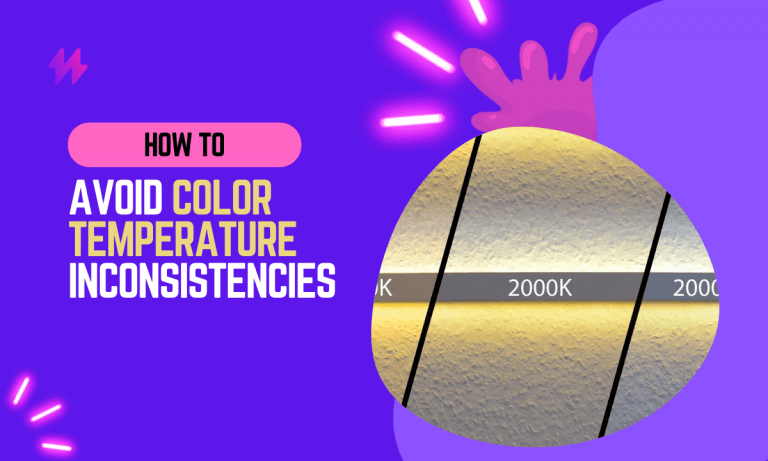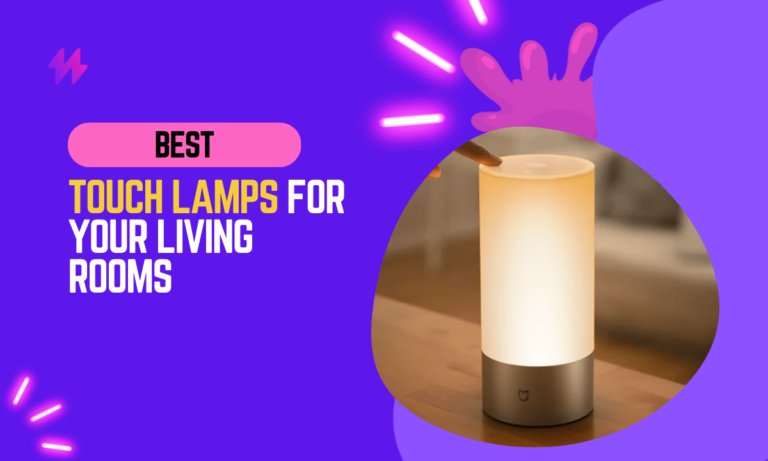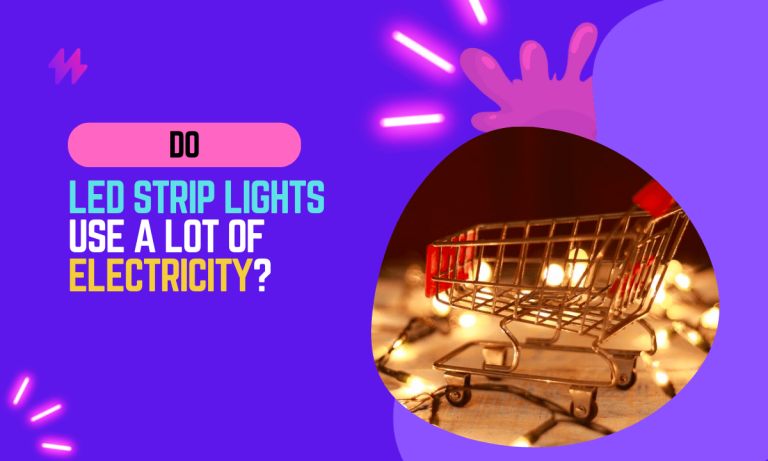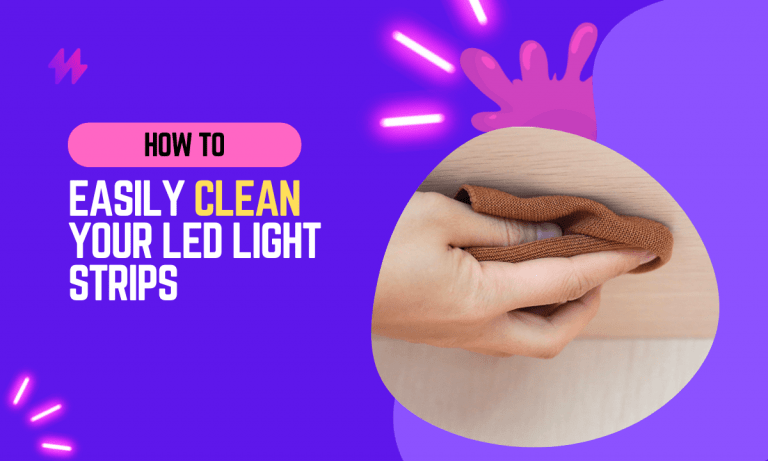Is It Safe to Cover LED Lights in Order to Dim The Light? {8 Benefits}

LED lights have become trendy in recent years, but there is some uncertainty surrounding them. Many of us want to cover them up for security purposes, but the question remains: is it safe to cover up LED lights?
In this article, we are going to explore the myth about this and hopefully provide some clarity on the subject.
While many people enjoy the benefits of LED lighting for their energy-efficient properties, it’s essential to understand the implications of modifying their setup. To maintain a safe and effective lighting environment, it’s important to consider proper dimming methods, including using LED dimming tape or translucent lens covers, before deciding if it is safe to cover LED lights in order to dim the light.
Is It Safe to Cover LED Lights in Order to Dim the Light?
There are a few reasons you might want to cover your LED lights. Perhaps you find the light too bright and you want to dim it down a bit. Maybe you’re using them in a security system and you don’t want anyone to know where the cameras are located.
Although LED lights are mostly believed to be safe, some people feel the opposite when they encounter them in mirrors, stoves, or appliances. As a result, these individuals want to conceal the LEDs.
The shields on LED lights are mostly for decoration, but they also keep people from touching the light. That way, it removes any discomfort!
Covering LED lights can provide a solution for achieving the desired brightness level in various settings, such as enhancing an energy-efficient lighting environment. However, it is critical to assess if it is safe to cover LED lights in order to dim the light, as improper modification may lead to issues with electrical safety or light flicker.
Assessing the Safety of Covering LED Lights
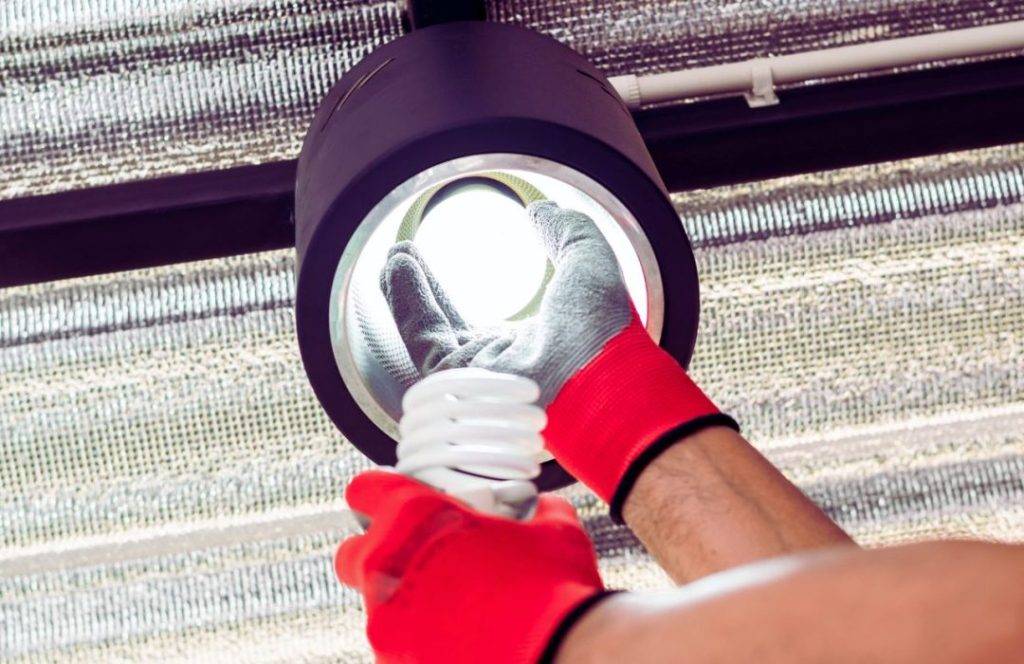
The common myth is that it’s not safe to cover LED lights because they overheat. Others believe that the light will become too dim if it’s covered.
We’re here to tell you that neither of these things are true! It is safe to cover LED lights because they don’t produce as much heat as other types of lighting, such as halogen or incandescent bulbs.
In fact, LEDs are designed in a way that allows them to dissipate any heat that’s generated. So, when you cover them, the heat has nowhere to go and it actually helps keep the bulb cooler.
As for the light becoming too dim, that also depends on the type of material you use to cover the light. If you use a heavy-duty material, such as black paper, then the light will be significantly dimmed.
On the other hand, if you use a sheer fabric, such as tulle, the light will still be visible but it will be softened. This is a great option if you want to create a more romantic ambiance in a room.
In short, it is safe to cover LED lights, and doing so can actually have benefits! Not only will it help dim the light, but it will also protect the bulb from being touched. So, if you’ve been wondering whether or not to cover your LEDs, we say go for it!
Many individuals find that utilizing a smart lighting system enhances their overall experience by allowing for personalized control over brightness levels and color settings. By incorporating purpose-made dimming dots or light dim stickers, you can effortlessly create various atmospheres in your home while ensuring that it is safe to cover LED lights in order to dim the light.
Understanding the Advantages of Covering LED Lights
Enhancing Atmosphere: Background Lighting for LED Lights
One of the best benefits of covering LED lights is that they can create background lighting. This is perfect for when you want to watch a movie or TV show without the bright lights shining in your eyes.
Creating different light settings in a room can also help set the mood. So, if you’re having a romantic dinner, you can turn off the main lights and just have the covered LEDs on in the background.
Covering LED lights provides an effective way to manage illumination levels in your home, contributing to a more inviting atmosphere. By carefully selecting appropriate dimming solutions, such as using light dim stickers, you can ensure it is safe to cover LED lights in order to dim the light, creating a pleasing ambience without flicker issues.
Enhancing Your Space: The Benefits of Dimmable LED Lighting
As we mentioned before, another great benefit of covering LED lights is that it makes them dimmable. This means you can control how bright or soft the light is, depending on your needs.
For example, if you’re working on a project that requires concentrated light, you can uncover the LEDs so they’re at full brightness. But if you want to relax in the evening, you can cover them up and enjoy the softer light.
Customizing your LED lighting setup can create a unique atmosphere that suits your preferences. As you explore options like light dim stickers or electrical tape, always evaluate if it is safe to cover LED lights in order to dim the light, ensuring a flicker-free experience while utilizing your various light sources effectively.
Long Lifespan of Covered LED Lights: Understanding Benefits and Safety
LED lights are already known for their long lifespan, but did you know that covering them can actually help extend their life even further? This is because when they’re covered, they don’t overheat as much and this helps preserve the bulb.
So, if you want your LED lights to last even longer, be sure to cover them up!
Using a sophisticated dimming driver can significantly enhance the experience of controlling light levels in various environments. Additionally, it’s essential to remember that improper modification can cause lights to flicker, so always evaluate if it is safe to cover LED lights in order to dim the light effectively.
Safe Covering of LED Lights for Children and Pets
As we mentioned before, one of the reasons people choose to cover LED lights is that they’re safe for children and pets. This is because the light is diffused and it’s not as bright, so it won’t hurt their eyes.
Not only that but covering LED lights also protects them from being touched or played with. This is especially important if you have curious pets who like to chew on things!
Covering LED lights not only helps create a softer ambiance for safety but also contributes to achieving specific dimming levels without significantly impacting electricity consumption. As you consider options like washi tape or lens tape, always assess if it is safe to cover LED lights in order to dim the light, ensuring you avoid any issues with lights flickering.
Affordable Solutions for Covering LED Lights
LED lights are already an affordable option when it comes to lighting, but covering them can help you save even more money. This is because they use less energy and last longer, so you won’t have to replace them as often.
If you’re looking for an affordable and long-lasting lighting option, covering LED lights is a great choice!
Covering LED lights can effectively create a softer ambiance, allowing for enhanced control over brightness levels and contributing to your desired atmosphere. Before making modifications, it’s crucial to evaluate if it is safe to cover LED lights in order to dim the light, as improper methods can lead to flicker issues that disrupt your lighting experience.
Easy to Install: The Benefits of Covering LED Lights
Installing LED lights is a breeze and covering them is just as easy! There are no complicated wires or setup required, so you can do it yourself in just a few minutes.
All you need to do is place the lights where you want them and then cover them with the material of your choice. It’s really that simple!
Utilizing a simple dimmer switch can allow you to effectively control the brightness of your LED fixtures without complicated setups. Additionally, it’s crucial to ensure that it is safe to cover LED lights in order to dim the light, especially when exploring various dimming solutions, such as light dim stickers or transparent tape.
Aesthetic Appeal of Covering LED Lights: Explore the Benefits and Safety
Last but not least, covering LED lights can give any room a unique and stylish look. This is because you can choose from a variety of materials, colors, and patterns to create the perfect look for your space.
So, if you want to add a touch of personality to your home, covering LED lights is a great way to do it!
Covering LED lights not only enhances the aesthetic appeal of a room but can also ensure that the overall illumination is calming and inviting. To maintain optimal brightness without encountering issues, it’s essential to ascertain if it is safe to cover LED lights in order to dim the light, allowing for a flicker-free experience.
Essential FAQs on Covering LED Lights: What You Need to Know
Can You Cover LED Lights with Plastic? | Exploring Safety and Benefits
Yes, you can cover LED lights with plastic, but it’s not the best option. This is because plastic can cause the light to overheat and this will shorten the lifespan of the bulb.
If you do choose to cover your LED lights with plastic, be sure to leave some ventilation so the heat can escape.
Covering LED lights with light plastic can sometimes compromise their efficiency, leading to undesirable overheating and a reduction in lifespan. Therefore, it’s crucial to know if it is safe to cover LED lights in order to dim the light, as improper modifications might interfere with the light fixture’s performance and lead to unwanted flicker.
Can You Safely Cover LED Lights with Fabric?
Yes, the fabric is a great option for covering LED lights! It will diffuse the light and create a softer glow. Plus, it’s safe for children and pets since they can’t touch the bulb.
Covering LED lights with fabric is a wise choice that promotes a softer glow while keeping the space safe for everyone. Ensuring that it is safe to cover LED lights in order to dim the light will help prevent issues like flicker and maintain a cozy atmosphere in your home.
Exploring the Safety and Techniques: Can You Cover LED Strip Lights?
Yes, you can cover LED strip lights! This is a great way to create background lighting or to set the mood in a room. Just be sure to leave some ventilation so the heat can escape.
Covering LED strip lights can significantly enhance the atmosphere of your space by providing a soft glow, especially during the night. It remains essential to consider if it is safe to cover LED lights in order to dim the light, as neglecting to ensure proper ventilation may lead to overheating and reduced performance.
Do LED Lights Get Hot When Covered? | Essential Insights
LED lights do not produce as much heat as other types of lights, but they can still get hot when covered. This is why it’s important to leave some ventilation so the heat can escape.
When considering modifications to LED lighting, it’s crucial to understand how different dimming methods can affect performance and safety. Addressing the question of whether is it safe to cover LED lights in order to dim the light can help prevent potential issues like flickering while ensuring desired brightness levels are achieved with methods such as PWM dimming or using light dim stickers.
Is It Safe to Use Tape on LED Lights? | Understanding Safety Concerns
Yes, it’s safe to put tape on lights, but only if the tape is rated for heat. Otherwise, it can catch fire.
When modifying LED lights, choosing appropriate materials is vital for both safety and functionality. Using specific heat-rated tape can help achieve flicker-free dimming in both blue and red lights, enhancing the brightness levels without the risk of overheating. Consider utilizing smart light switch controls or light dim stickers to manage illumination effectively across various possible light sources while ensuring the LEDs do not flicker. Employing techniques like pulse-width modulation (PWM) can facilitate smoother transitions in brightness, especially when aiming to maintain brightness during instances of total darkness or blackout.
Conclusion on Covering LED Lights: Key Takeaways
In conclusion, covering LED lights as a method to dim their brightness can offer several benefits, but it must be done with caution to ensure safety and effectiveness. While this approach allows for a simple and immediate reduction in light intensity, thereby creating a softer ambiance, it is crucial to use materials that are non-flammable and designed for contact with LED lights. This ensures that the cover does not pose a fire hazard or cause overheating, which could potentially damage the LED internals. Such materials also help in diffusing the light evenly, preventing harsh spots of brightness from escaping the cover, which contributes to a more uniformly lit environment suitable for activities such as watching television or relaxing.
Moreover, covering LED lights can also provide aesthetic benefits by allowing for customization of lighting fixtures to better match interior decors. For example, using different textures and colors of covers can add a unique design element to a room while still benefiting from the energy efficiency of LED technology. However, it’s important to consider that this method of dimming does not actually reduce the energy consumption of the LED; the light is merely blocked or filtered rather than the output being decreased. For those looking to conserve energy, dimmable LED options with appropriate dimmer switches would be a more suitable choice. In essence, while covering LEDs can be beneficial for modifying lighting aesthetics and reducing glare, it should be approached with mindful consideration of the materials used and the overall impact on light quality and safety within the space.
Is It Safe To Cover LED Lights In Order To Dim The Light | Assessing the Risks of Covering LED Lights
Covering LED lights to achieve a dimming effect raises questions about safety and performance. Is It Safe to Cover LED Lights in Order to Dim The Light entails understanding the risks, notably the potential for overheating due to restricted airflow. Bright LEDs are designed to operate efficiently, often utilizing technologies like pulse-width modulation or DALI dimming for flicker-free dimming options. If the light dims excessively or is left in total darkness, there is also the concern of how it may affect the longevity of the fixture. Using opaque materials can obstruct airflow, leading to increased heat, especially with high wattage bulbs like tail/brake lights or indicator lights. Employing light dim stickers or using traditional incandescent dimmer switches with compatibility for LED drivers may provide safe alternatives to ensure that bright status LEDs maintain their function while reducing brightness.
Is It Safe to Cover LED Lights in Order to Dim The Light | Potential Fire Hazards of Covering LED Lights
Covering LED lights to achieve dimming can introduce potential fire hazards. LEDs generate minimal heat; however, covering them with materials that restrict airflow, like fabric or plastic, could lead to overheating. In a worst-case scenario, this can result in a fire, especially if the covered LED is a high-output model, such as bright blue LEDs. Controlling the LED brightness through a light switch or a digital addressable lighting interface (DALI) could be a safer alternative, allowing for effective dimming without the need for opaqueness or physical covers.
The use of items like lightdim stickers to adjust brightness also presents risks. They may not be designed to handle the heat output of LEDs, even for short periods, leading to potential damage or failure of the light source. Color control can also be affected, altering the hues of blue lights, red lights, or green light in unintended ways. Total blackout scenarios may emerge if the LED fails, disrupting activities like reading at a desk or using a sleep mask to block light during the night. Understanding the question, “Is It Safe to Cover LED Lights in Order to Dim The Light,” is crucial for ensuring safety and maintaining effective lighting.
Effects on LED Light Performance and Lifespan
Covering LED lights can negatively impact their performance and lifespan. Many people ask, “Is It Safe to Cover LED Lights in Order to Dim The Light?” This question arises especially in the context of small light sources or status lights, which are often used for random illumination. Using methods like triac dimming or phase-cut dimming may lead to overheating if the light is covered, raising concerns regarding power efficiency and the overall durability of the LED.
The materials used to cover the fixtures can also play a role in determining the longevity of the lights. Using inappropriate coverings may create an unintended barrier, causing the LEDs to struggle and possibly fail sooner than expected. This is particularly relevant in scenarios such as last night’s alarm, where lights are dimmed to reduce glare or create ambiance. It is crucial to consider the implications of covering LED lights and to evaluate whether the visual benefits outweigh the risks associated with their performance and lifespan.


